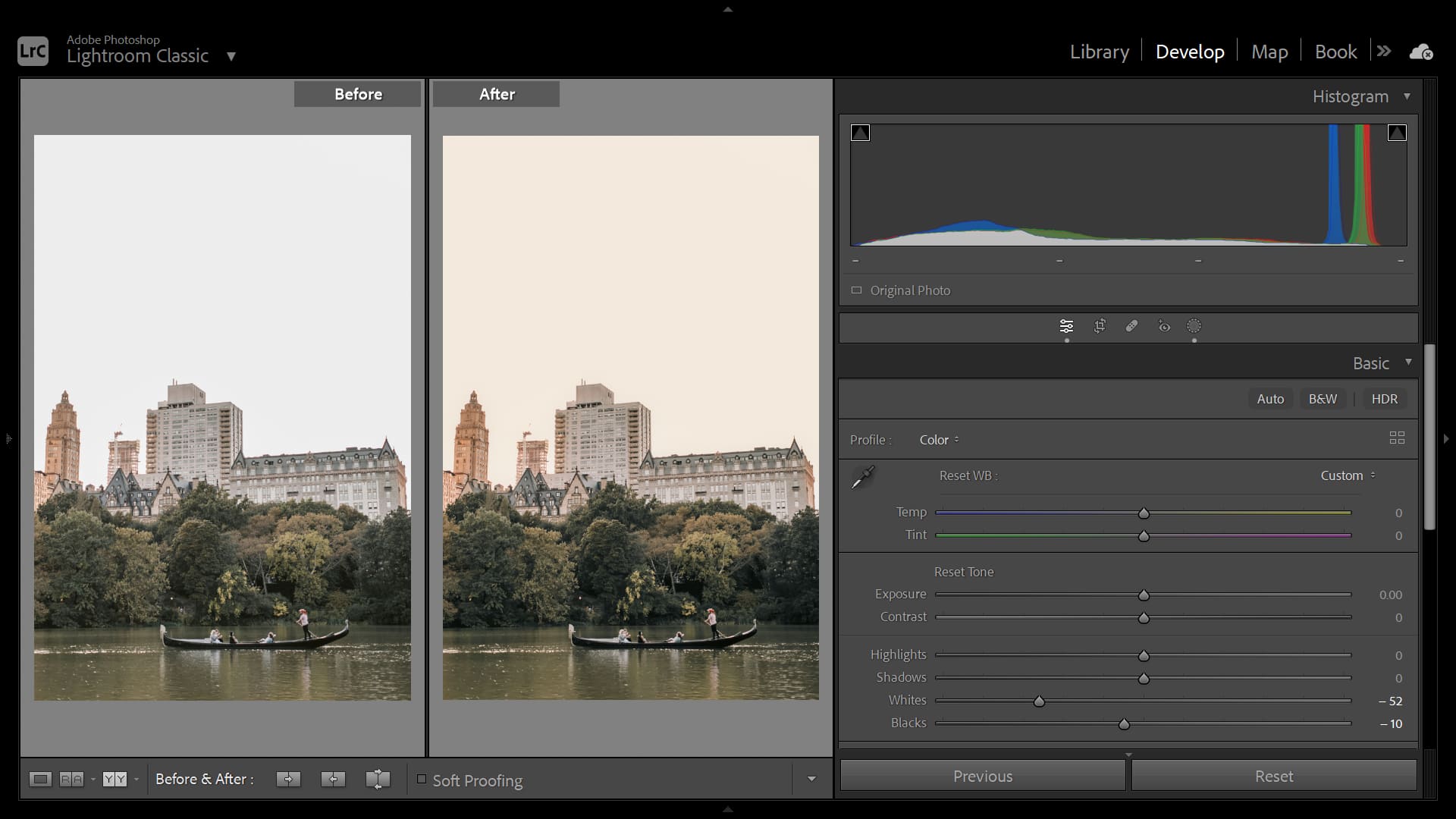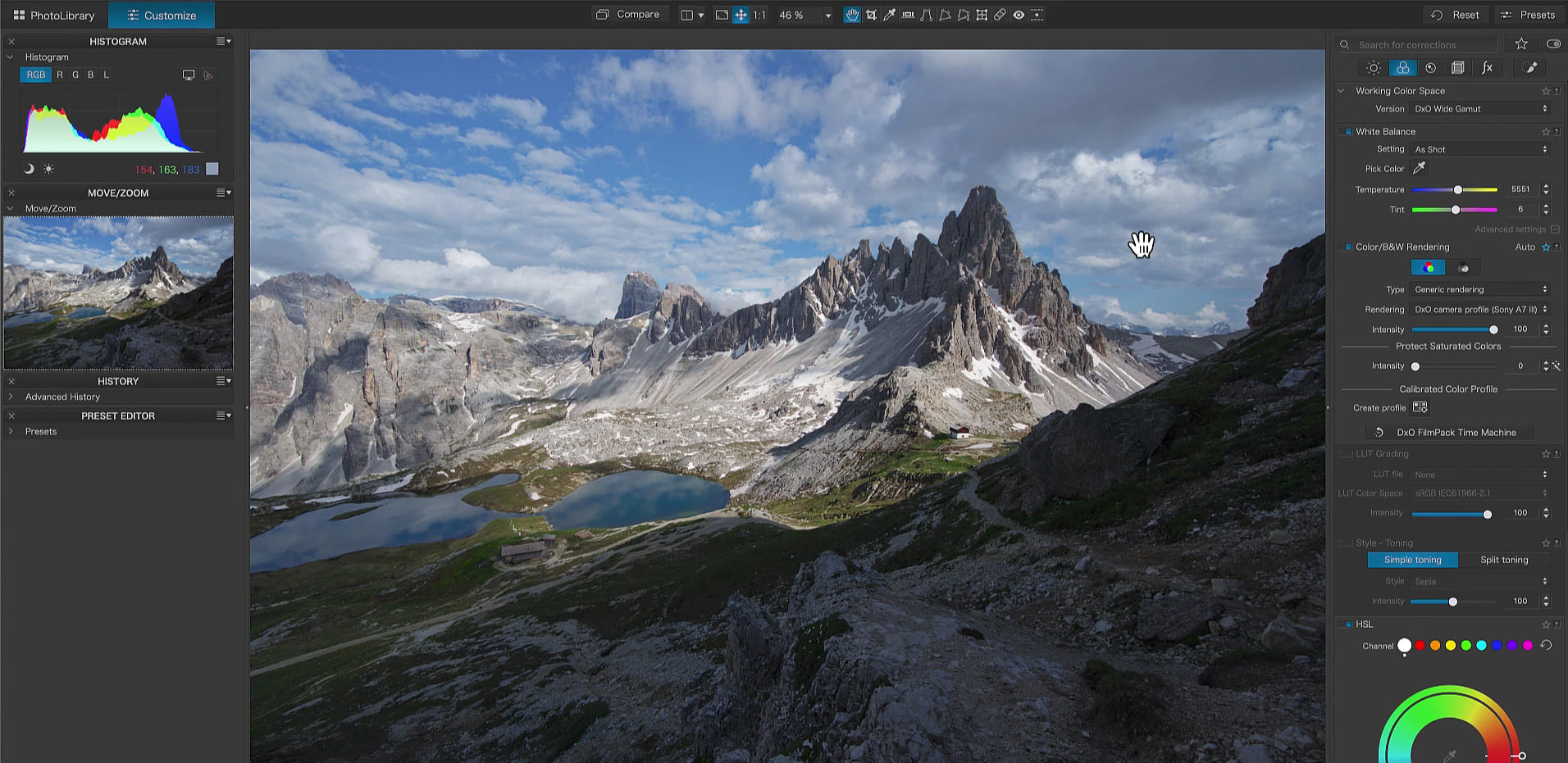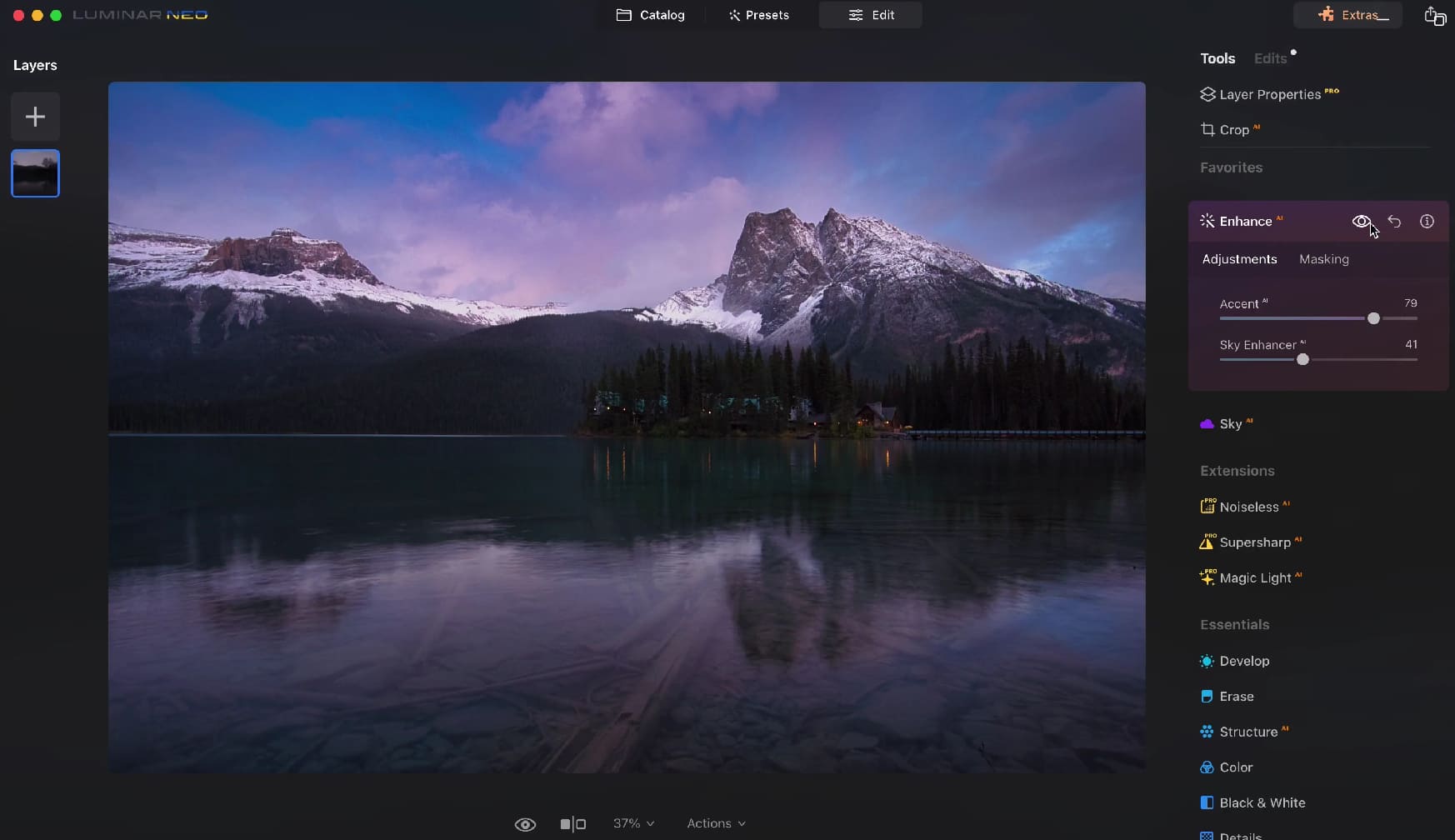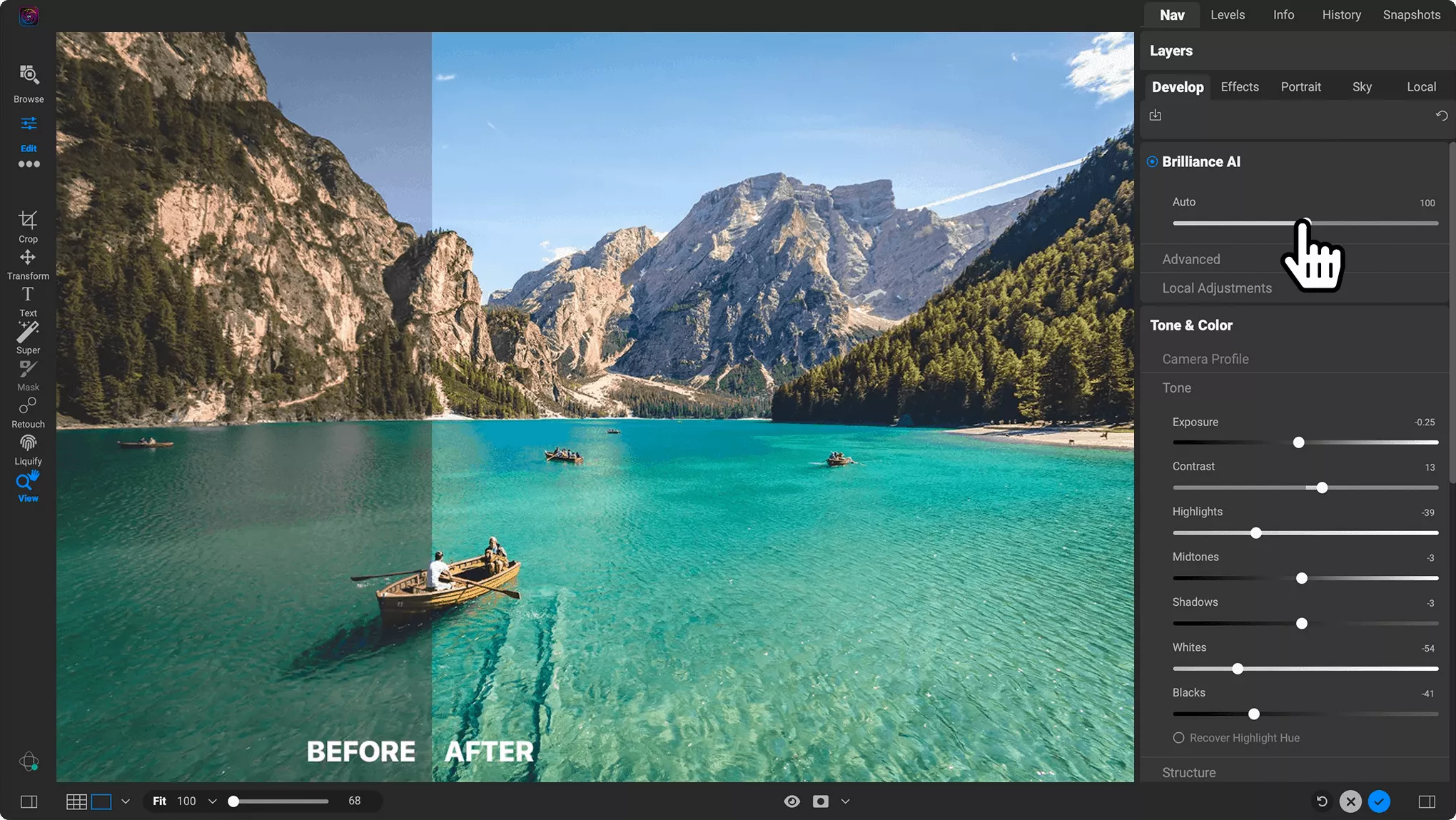Lightroom Alternatives: 4 Powerful Options for Your Needs
For photographers, Lightroom is a commonly used photo editing software. However, it can be quite memory-intensive and often causes computer crashes and lagging issues while processing photos.
So, is there an alternative to Lightroom that can handle a large number of camera RAW files without the hassle and exhaustion?
In this article, we will share some Lightroom alternatives that combine photo editing and management functionalities. So, let's get started and explore these alternatives.

In this article, you will learn:
- What Is Lightroom?
- Lightroom Alternatives: Which One Is the Best Choice?
- Lightroom Alternatives: Image Processing Evaluation
- Lightroom Alternative: Which One Should You Choose?
What Is Lightroom?
Adobe Lightroom is one of the most well-known software for photo editing and management, seamlessly integrated with other Adobe programs.
There are numerous Lightroom presets and plugins available online, along with a wealth of tutorials, making it relatively easy for beginners to get started. That's why Lightroom is often the go-to choice for most photographers and photography enthusiasts.
The first version of Lightroom was released in 2006, and it supports PC, mobile devices, and a web-based version called Lightroom CC. Unlike the perpetual license model, Lightroom operates on a subscription-based model, meaning you'll need to pay for it continuously as long as you continue using Lightroom.

Lightroom Alternatives: Which One Is the Best Choice?
In this section, we will briefly share some alternative software options to Lightroom. You can make your own choice based on the features of each software.
1. Capture One
Capture One, developed by Phase One, a Danish digital camera system company, first emerged in 2002 (originally known as Lightphase Capture).
Capture One offers advanced features for RAW image processing. It supports tethered shooting, provides meticulous, professional, and comprehensive image editing capabilities, and even includes layer functionality. Although it may not have an extensive collection of built-in presets, it is an ideal choice for professionals.
Capture One offers different versions and pricing options for individual users and photography teams. In comparison to Adobe Lightroom, Capture One provides more flexible licensing choices.
While Lightroom only offers subscription-based licenses, requiring you to pay a monthly or annual fee to use the software, Capture One offers both subscription-based and perpetual licenses. This allows you to select the license type that best suits your specific needs.
Another advantage of Capture One over Adobe Lightroom is its smaller installation size. While Lightroom can occupy nearly 3GB of space, Capture One only requires around 900MB, resulting in faster performance and smoother operation.

2. DxO PhotoLab
You may have heard of DxO for their smartphone and camera photography ratings, but they actually started with computer graphics processing and have some cool innovations in the field of image processing.
With their extensive camera testing experience, DxO PhotoLab offers robust image correction capabilities and a wide range of presets. It can also be used in conjunction with the Nik Collection plugin (which needs to be installed separately) for even more advanced photo editing and presets.
DxO PhotoLab was formerly known as DxO Optics Pro and was introduced in 2004. It requires approximately 850MB of hard drive space and is a lightweight yet professional-grade RAW image processing software.
DxO PhotoLab comes in two versions: the Essential edition priced at $139 and the Elite edition priced at $229, with additional package combinations available.
DxO PhotoLab operates on a perpetual license model, which means you only need to make a one-time payment to use it for a lifetime. Considering all these factors, DxO PhotoLab is indeed a great alternative choice to Lightroom.

3. Luminar Neo
Luminar is a highly user-friendly and popular photo editing software that has gained significant popularity in recent years, especially for its impressive AI capabilities. It claims to be the world's first AI-powered image editor.
The latest version of Luminar is Luminar Neo, which is even used by professional photographers and can fully replace other post-processing software. It allows easy editing of RAW files and offers post-processing options for color adjustments.
Luminar Neo's Face AI feature enables facial retouching and skin smoothing, while the Sky AI feature helps salvage those not-so-great photos taken during unfavorable weather conditions, making travel pictures more satisfying.
Additionally, the application comes with built-in presets, allowing you to apply a set of predefined adjustments to your images with just a few clicks. Various other presets can also be purchased from the Luminar Marketplace.
Currently, Luminar Neo operates on a subscription basis, offering options for monthly, yearly, and two-year subscriptions. The price may not be cheap, but Luminar often runs promotional activities, so it's worth following their social media channels to stay updated on the latest discounts and offers.

4. On1 Photo RAW
On1 Photo RAW is positioned similarly to Adobe Lightroom and offers a comparable user experience. It integrates multiple plugins, including a Photoshop plugin, and provides a wide range of presets.
It supports layers and features AI-based sky replacement and beautification functions similar to Luminar Neo. Additionally, it supports panoramic stitching, HDR merging, focus stacking, and time-lapse photography.
On1 Photo RAW also offers a PLUS version, which provides more cloud storage space and additional membership benefits such as courses and resource materials. You can choose the version that suits your needs.
The initial release of On1 Photo RAW was in 2016. Currently, you have the option to subscribe on a monthly basis or make a direct purchase. However, purchasing On1 Photo RAW is equivalent to an annual subscription, as your one-time purchase only covers software updates for the current year and does not include future updates.
Therefore, if you decide to choose On1 Photo RAW as an alternative to Lightroom, a monthly subscription is your best choice.

5. Other Lightroom Alternatives
The following three software options all have image management and RAW file editing capabilities. They are relatively lightweight alternatives to the aforementioned RAW file editing software and also serve as good replacements for Lightroom.
- RAWTherapee: A free and open-source RAW file processing software. It offers image editing, file rating, classification, and filtering functions. It has a fast opening and response speed and supports RAW files from most cameras on the market.
- Corel Aftershot: From the well-established Canadian software company Corel, Aftershot has similar features to Lightroom. However, it has slower software updates and supports a limited range of camera types. For example, even the latest version cannot open Panasonic S5 camera RAW files.
- ACDsee Photo Studio Ultimate: The full-featured version of ACDsee, this software has powerful file management capabilities and quick image opening. It also supports RAW file editing, although it has limitations in terms of supported camera RAW files.
In addition, the following four software options are professional image editing software that offers much more powerful image processing capabilities than most comprehensive file management and editing software. They can also serve as replacements for Lightroom.
However, it is important to note that these software options all operate in a destructive editing mode, meaning they do not maintain the same level of image quality as the software we introduced earlier. The following options are generally used for fine-tuning images rather than as the initial processing of camera RAW files.
- Adobe Photoshop: Also from Adobe, Photoshop is the most famous image processing software in the world. It offers a wide range of plugins and features but comes with a higher price tag, so we won't go into much detail here.
- Affinity Photo: Developed by the UK-based company Serif, Affinity Photo has been considered one of the biggest challengers to Photoshop in recent years. It is currently the only professional image processing software that spans across Windows, Mac, and iPad platforms.
- Corel Paintshop: Corel Paintshop is similar to Photoshop and is a well-established image editing software. While Photoshop has overall more powerful features and numerous plugins, Paintshop excels in file management and offers some unique functionalities not found in Photoshop.
- Pixelmator: Developed by a pair of Lithuanian brothers, Pixelmator is the first professional image processing software on the Mac and iOS platforms that supports the WebP format. The only drawback is that it does not have a Windows version.
There are also other software options such as GIMP, Exposure, Darktable, LightZone, Photo Ninja, and Zoner Photo Studio, which offer similar functionalities.
We won't go into too much detail about them, not because they are not good, but because they may lack support for RAW formats or lack file management capabilities, making them unable to replace Lightroom's position perfectly.
Lightroom Alternatives: Image Processing Evaluation
In this section, we will briefly share our test results and provide a simple evaluation of the different features of the Lightroom alternatives mentioned above to help you make a choice.
Before we dive into our evaluation, we would like to recommend a tool that can greatly enhance your image editing efficiency: TourBox.

TourBox is a creative tool that seamlessly integrates with various image, video, digital painting, and office software. Imagine being able to control tedious tasks like photo management, color adjustment, and batch processing with just one hand using TourBox!
TourBox provides numerous built-in functions and presets, making it easy to use without any learning curve. Additionally, you can customize settings such as combination actions, TourMenu, and macros, giving you endless possibilities.
Now, let's begin our evaluation of Lightroom alternatives. Due to different software versions and default settings, the results may vary slightly, and the evaluation is subjective and not definitive.
We will provide subjective but specific ratings, but please note that choosing the right Lightroom alternative requires considering various factors.
1. Detail Recovery
Detail recovery mainly depends on how the software balances sharpening and noise reduction. Higher sharpening enhances details, but also increases image noise.
In this aspect, there isn't much difference in sharpening performance among the software options, but our rating is as follows: Capture One ≥ DxO PhotoLab ≈ On1 Photo RAW ≥ Luminar Neo ≥ Lightroom.
2. Nighttime Dynamic Range
When shooting nighttime scenes, details are often lost due to low lighting. RAW files preserve more original information and provide a larger dynamic range compared to JPG files, allowing you to recover visible images even from shadows.
In terms of recovering nighttime scenes, our rating is: Lightroom > Capture One ≥ DxO PhotoLab > On1 Photo RAW ≥ Luminar Neo.
3. Noise Control
DxO PhotoLab stands out when it comes to noise reduction. Its deep learning noise reduction preserves the most details and produces natural color transitions. The differences between other software options are not significant.
In terms of noise control, our rating is: DxO PhotoLab >> Capture One > On1 Photo RAW ≥ Lightroom ≈ Luminar Neo.
4. Color Rendering
When it comes to color grading, applying color presets not only adds effects quickly but also significantly improves workflow efficiency.
In this regard, DxO PhotoLab performs exceptionally well. It supports dozens of popular digital camera and film presets and allows importing all Lightroom presets. You can also adjust the intensity of color presets.
In terms of color preset support, our rating is: DxO PhotoLab ≥ Capture One = Lightroom > On1 Photo RAW > Luminar Neo.
5. Lens Correction
No lens is perfect, and each lens has some degree of distortion, chromatic aberration, vignetting, and edge softening issues. The mentioned software options all have lens correction capabilities, but the differences in their effects are not significant.
In terms of lens correction, our rating is: DxO PhotoLab ≥ Lightroom ≥ Capture One ≥ On1 Photo RAW > Luminar Neo.
6. Auto Adjustments
For most photography enthusiasts, if automatic adjustments can meet their needs, it would be perfect, especially for landscape photos where auto adjustments can be very convenient. The software options mentioned above all have their own unique auto-adjustment capabilities, so how do they compare?
In terms of auto adjustments, our rating is: Luminar Neo ≥ Capture One > DxO PhotoLab ≥ On1 Photo RAW ≥ Lightroom.
7. File Management
When it comes to file management, Lightroom is undoubtedly the leader. Lightroom's photo management features are powerful, allowing you to categorize photos by star ratings, color labels, and flags. You can also filter photos based on shooting locations, time, camera types, lens types, and more.
If you have used Lightroom's file management features, you will be impressed by its capabilities.
In terms of file management, our rating is: Lightroom > Capture One ≥ On1 Photo RAW ≥ DxO PhotoLab >> Luminar Neo.
Lightroom Alternative: Which One Should You Choose?
The Lightroom alternatives we mentioned above are all excellent RAW file-processing software. Capture One and DxO PhotoLab, in particular, are powerful and professional alternatives coming from renowned camera manufacturers and camera testing laboratories.
If you prioritize image quality, you should consider DxO PhotoLab. It has strong noise reduction and lens adjustment capabilities, as well as decent sharpening and RAW file processing.
However, its file management features are relatively simple, and the image adjustment process, especially for highlights and shadows, differs significantly from the other two options, resulting in some differences in the final results.
If you want to strike a balance between image quality and workflow, you can start by correcting your images in DxO PhotoLab for noise reduction and sharpening, and then export the images to Lightroom or Capture One for further editing.
Of course, Capture One is also a good choice for professionals who frequently use photo editing software. If you are not used to Lightroom and want a more affordable option that saves disk space and provides smoother operation, you should give Capture One a try.
As for Luminar Neo and On1 Photo RAW, both are popular image editing software with unique features, but they also have their drawbacks.
Luminar Neo adopts an AI-driven, template-oriented simplified operation mode while still offering various professional RAW processing features. Its focus is on image processing, and its file management features are very basic.
The optimization is not outstanding, and it lacks extensive color and lens correction presets. It is suitable for users with higher computer configurations (or those using the latest Mac computers) and a more creative mindset. It can also be used as an auxiliary tool for adding special effects.
On1 Photo RAW has comprehensive features, even surpassing Lightroom, with a wide range of presets and excellent film simulations and adjustments.
However, its feature settings can be a bit repetitive, and the default image tone is often on the darker side, resulting in less satisfactory results at times. Currently, it is more suitable as an auxiliary tool (some of its smaller tools are really good).
While Lightroom may not have all the advanced features of Capture One or DxO PhotoLab, and it may be pricier and less optimized, many people still prefer it because they are familiar with it. Other software options don't have clear advantages over Lightroom.
Product Recommendation:
If you're interested in how TourBox can improve your workflow efficiency, you might want to check out our latest product, TourBox Lite. It's more affordable and easier to get started with, making it perfect for first-time users of TourBox.

That concludes our article about Lightroom alternatives. We hope it has been helpful for your creative journey.